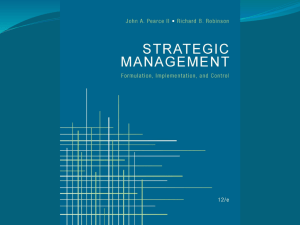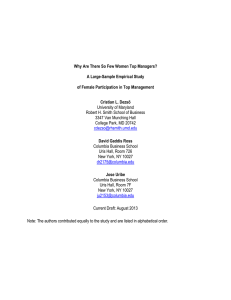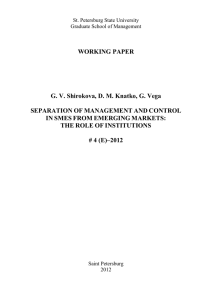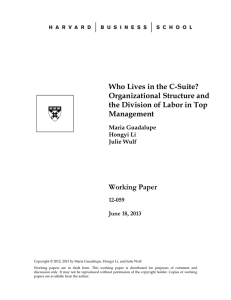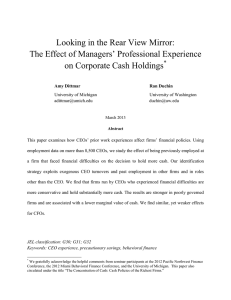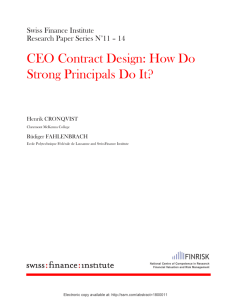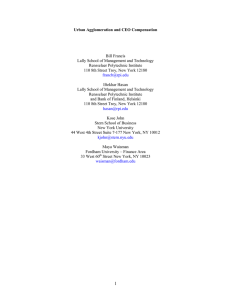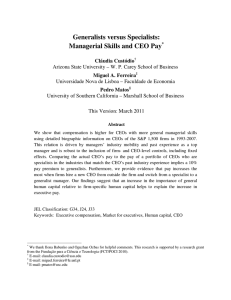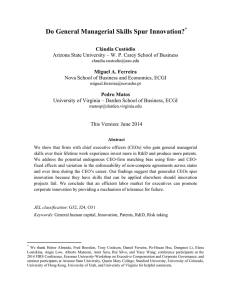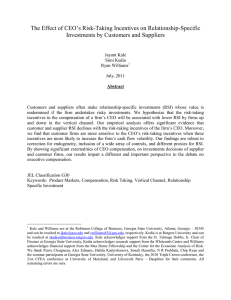Selecting Corporate-Level Strategy Chapter 8
advertisement
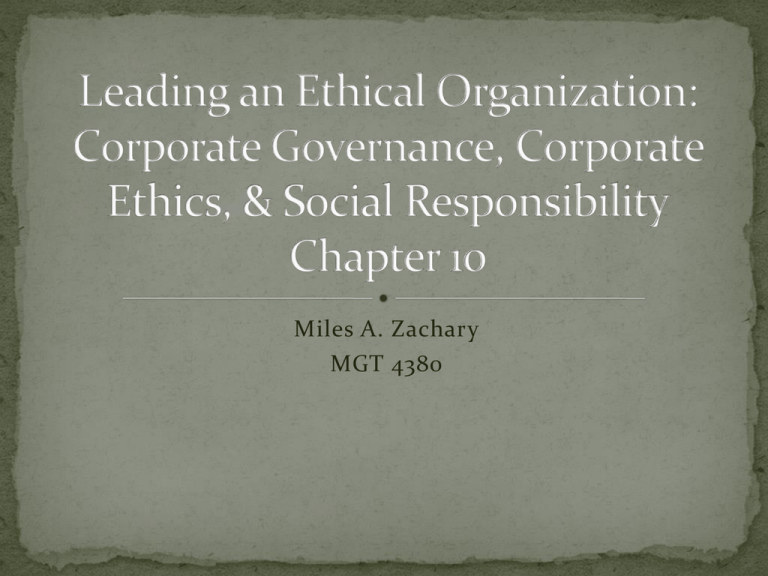
Miles A. Zachary MGT 4380 Corporate governance involves: Making meta-managerial decisions Approving financial objectives Advising on strategic issues Making TMT members aware of laws and regulations Representing stakeholders (namely shareholders) Corporate governance is the responsibility of the board of directors—a group of individuals, either elected or appointed, that oversees the activities of an organization or corporation Effective board members bring resources and capabilities to an organization; sometimes celebrity Board composition is a critical factor in the dynamics of board decision-making Board insiders: members of the board that are employed in the firm Board outsiders: members of the board external to the firm Institutional investors such as hedge funds, retirement funds, or banks often request a number of outside board members CEO duality: when the CEO is also the chairman of the board of directors Can be controversial since it gives a large amount of power to one person; can create divisions and conflict in the board CEO compensation is a balance between competitive pressures and the value of the day-to-day functions of a CEO “Salary commensurate with experience”—firms must pay for the limited number of quality talent Market pressures help to dictate the high price firms pay for a CEO However, the salary is balanced by industry norms and investor pressure Agency Problems The interests of firm management (e.g., the CEO) and the owner(s) (e.g., the board, shareholders) are not always equal The solution: better alignment Often done through high CEO compensation and stock options/ownership opportunities What are some other ways firms can achieve better interest alignment? CEO compensation often includes: Guaranteed salary Cash/option bonuses Stock options Perks Perks are often the “unsung” benefits of being a CEO When a firm is doing poorly, sometimes they are poised for a takeover Leveraged buyout (LBO): a company that is purchased through significant debt then removed from the stock market Reduction in workforce and streamline/cost savings ensue Hostile takeover: an attempt to buy a company that is resisted by the target firm Sometimes the target firm may be saved by a “white knight”; a firm that is a more favorable buyer Corporate Raider: an individual or a firm that purchases stock in another firm with the intentions of eventually taking it over E.g., Richard Gere’s character in Pretty Woman is a corporate raider Shark Repellant: activities conducted by a board to deter or defend the firm from a takeover Greenmail-buy back large blocks of shares at a premium to retain % ownership Poison pill-sell considerable amounts of stock to dilute the number of shares a purchaser needs to own the company Golden parachute-a cash bonus given to executives who help a takeover transition In response to several notable corporate scandals at Enron, WorldCom, and Tyco, congress legislated the Sarbanes-Oxley Act of 2002 The law set new or increased standards for the boards of public US companies and accounting firms Businesses should be careful to not only follow the letter of the law, but the spirit of the law Corporate social performance is the degree to which a firm’s actions honor ethical values that respect individuals, communities, and the environment Can be measured by the impact a firm has on: The community Product quality/safety Diversity Employee relations Environmental Ethical corporate governance Sometimes businesses are created or create new aspects of their business in the name of social good Social entrepreneurship is the entrepreneurial actions where both economic and social value are created E.g., Tom’s shoes—buy one, give one While CSR has emerged as an important priority for businesses, it has been less than effectively implemented (Porter & Kramer, 2006) It has pitted firms against society when they are clearly interdependent Has been discussed generally as opposed to specifically how it can improve a firm’s strategy and performance How are businesses and societies interdependent? Firms need societies Education, health care, and equal opportunity create productive workforce Good laws protect firm interests and property Efficient utilization of land, water, energy, and other resources is essential Societies need firms Creates jobs Innovation improves the quality of living Corporate taxes help fund government operations Important to mind the “principle of shared value” where in a temporary gain in one will hurt the long-term prosperity of both Three (3) categories of social issues Generic social issues are important to society, but do not significantly affect the organizations operations or longterm competitiveness Value chain social impacts are those things that are significantly affected by a firm’s activities in the course of ordinary business Social dimensions of competitive context are factors in the external environment that affect the underlying drivers of competitiveness in a companies operations Each of these affect different companies in different industries differently The most important thing a firm can do for society is contribute to a prosperous economy When firms are punished unnecessarily for being productive, it hurts the society it operates in Firms must, however, avoid seeking short-term profits through deception Rather, firms should build long-term success by focusing on shared value and using CSR strategically to improve their organization and the world





